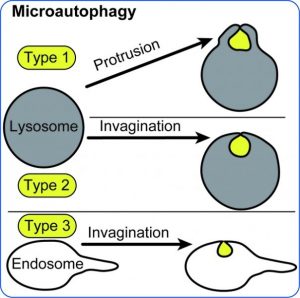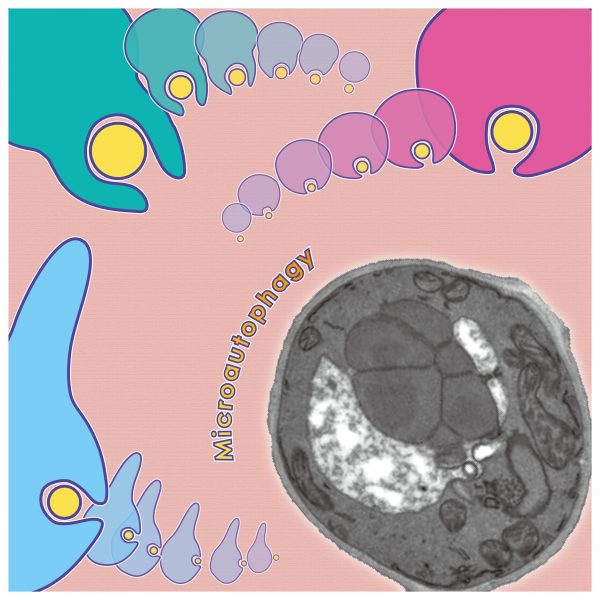Autophagy is a highly regulated process by which a cell disassembles dysfunctional components or parts that are no longer needed. Autophagy can be classified into the following three categories: macroautophagy, microautophagy and chaperone-mediated autophagy. In their “Ideas & Speculations” article published in BioEssays, Masahide Oku and Yasuyoshi Sakai take a closer look at microautophagy and propose a further classification of microautophagy into three distinct types (see figure).

In contrast to macroautophagy where first an autophagosome with a double-membrane is formed that subsequently fuses with the endosomal or lysosomal membrane, microautophagy is characterized by direct lysosomal (in mammals) or vacuolar (in plants and fungi) engulfment of the respective cytoplasmic cargo. Studies in several model organisms have not only identified a set of proteins involved in this process but have also led to a wider definition of microautophagy. In addition to lysosomal/vacuolar engulfment, this new definition now also includes endosomal membrane dynamics.
The authors base their classification of microautophagy on the site and morphology of the membrane deformation, and they discuss the underlying molecular mechanisms for the respective types of microautophagy. The first type is characterized by lysosomal protrusion. Atg5 (in plants) as well as Vac8 and Atg18 (in the yeast Pichia pastoris) are proteins found to be involved in this type of microautophagy.
The second type is defined by lysosomal invagination. To date, this process has been best studied in the yeast Saccharomyces cerevisiae where the cargo targeted includes cytoplasm, endoplasmic reticulum, portions of the nucleus, mitochondria and lipid droplets. Interestingly, the invaginated vacuolar membrane shows a distinct microdomain architecture with, for example, very small amounts of transmembrane proteins.
The third type of microautophagy was recently discovered and studied in a murine dendritic cell line as well as in the fruit fly Drosophila melanogaster. It is also termed endosomal microautophagy and is characterized by endosomal invagination. The ESCRT machinery is an important component of this pathway, and it additionally involves several adaptor proteins (such as Nbr1 and Hsc70).
Looking at these three types of microautophagy one may notice that several molecular machineries are shared between different the types such as the ESCRT machinery that is shared between a subset of yeast type 2 microautophagy and type 3 microautophagy. In addition, microautophagy is also linked to other autophagy pathways and membrane dynamics via multiple shared components such as Atg proteins and Hsc70.

















